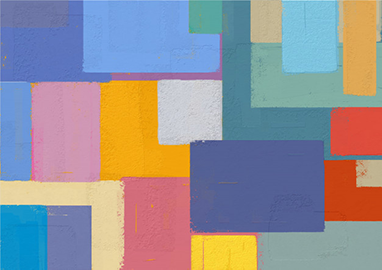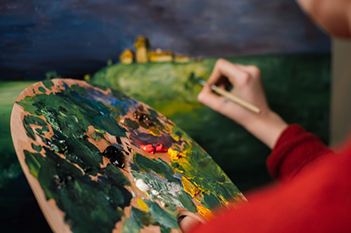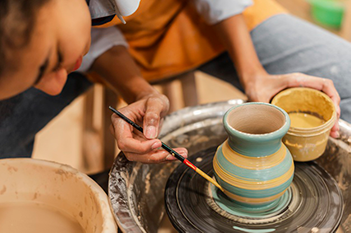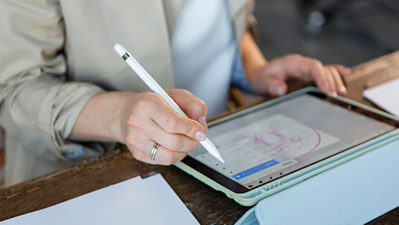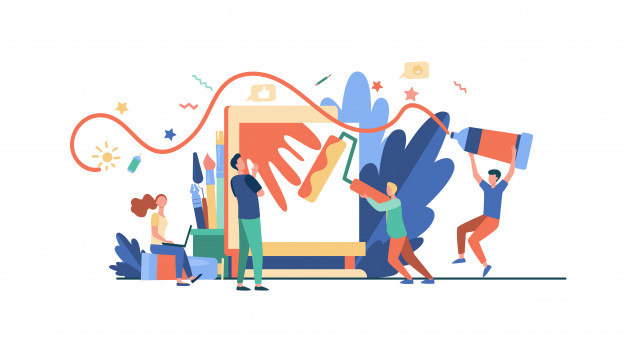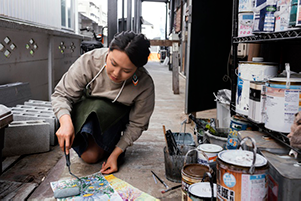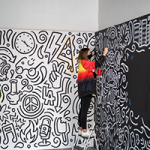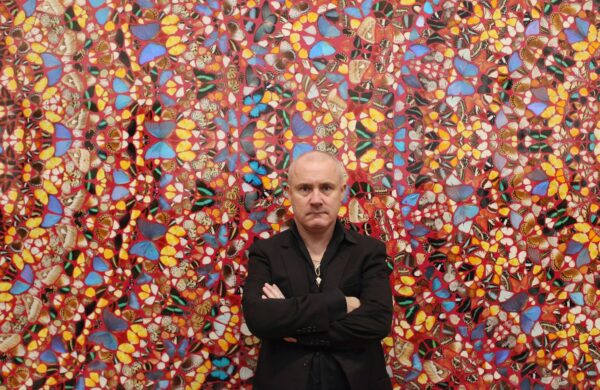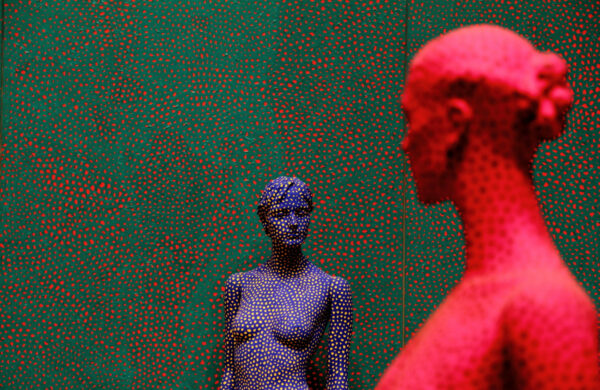Digital Art vs Traditional Art: Which one Is Better?
The Digital Art vs Traditional Art debate has been ongoing for quite some time now… Ever since the introduction of digital platforms and mediums, art has adapted and adopted many different forms throughout the years in order to fit the ever so changing times.
Digital artists have always stood by their work, claiming that digital art is every bit as “real” as traditional works. Traditional artists, on the other hand, consider digital art a form of “cheating”, “fast and easy art”, and “fake”. Some might even say that digital creators don’t make enough effort to be considered real artists.
It’s a controversial topic with no clear answer yet… However, for every valid argument that supports traditional art over anything else, digital art is the industry’s preferred medium for commercial products and here is where the line gets blurry…
Is Digital Art Actually Easier?
Some people in the art community see technology as a threat to originality and are concerned that it will replace traditional artmaking. This idea can certainly be worrisome for some artists and art institutions like museums and galleries who rely heavily on traditional works.
Of course, not all artists have the same opinion on the subject. Some traditional artists are receptive towards digital art. Others see digital art as: “Computer, draw me a person,” and a portrait suddenly appears on their computer screen. This is certainly not how digital artists work most of the time…
Digital art can be easier sometimes,(- and I will list you the pros and cons later on) but it’s not easier from the knowledge and actual skills perspective. Digital artists must understand drawing and painting fundamentals, composition, techniques, colouring, etc.. and those are only a few skills that come from knowledge and experience and absolutely no software is a replacement for any of those criteria.
So it is definitely not true. Digital Art isn’t necessarily easier, because some artists can take longer amounts of time and effort working with different softwares and mediums than those who only work with traditional mediums.
Is Traditional Art Dying?
The question has been asked a lot especially recently with all the NFTs hype going on. But my answer is that traditional art is not dying and it probably will take decades for that to ever happen.
It is true that while the traditional commercial industry medium is physical art, a large part of it has turned to digital media. Still, galleries, museums and auctions houses still see a lot of value and profit in traditional works.
Many people want a “real” painting on their walls. And it is in fact, a different experience that digital art can’t quite recreate yet.
Just like traditional artists, digital artists employ the same kind of skills but just with different tools. Using a computer to draw does not lessen the effort involved in creating art; it is simply done in a different manner from what many are used to.
Traditional vs Digital
Both digital and traditional art are similar in many ways, but also very different. To compare the two more closely, here is what each has to offer:
Traditional Art Pros
Traditional art is defined as any artwork made using physical media.
Skills
Obviously, it’s not just for traditional artmaking that you need a good set of skills. But it’s where you start. In order to to succeed in any art form you need to learn the basis of art-making which begins in a traditional setting.
Colour theories, composition, drawing styles, graphic and stylistic expressions, techniques, experimentation with materials, textures, brushes, pencils and so on, you only get to understand and gain the fundamental knowledge a posteriori.
Imperfections
Traditional art’s uniqueness is one of its most cherished benefits. Sure, you can scan the artwork and modify an existing copy as your own, but then it’s no longer considered an original piece.
Moreover, those imperfections and unintended strokes are what make traditional art so beautiful and individualistic – they give each piece a sense of exclusivity almost.
Practicality
Creating traditional art doesn’t depend on technology. If you don’t have a connection or internet access, you can keep working…
Senses
Traditional artwork comes with a different type of beauty that can’t be reproduced digitally. It is touchable, it has textures and unique colour mixing that we can’t enjoy as much over a computer screen.
Traditional Art Cons
Lighting
A traditional artist’s work as a physical object requires light. If an artist were to paint in the middle of the day, their work will be noticeably different at night because of how light changes.
Medium Limitations
Although you are working with the actual medium, all of them come with limitations on what they can do: such as how one material interacts with another or limited color options, impossible blending nad running out of supplies
Permanence
Traditional methods are typically unforgiving. There is no “undo” feature, and the line you put in can’t be made unpermanent.
Messiness
Working with traditional medium can be inconvenient and messy, requiring long hours of cleaning up, washing, putting things away and setting up and preparing all the materials one might need to start making an artwork.
Digital Art Pros
Digital art refers to the creations of artists who utilize technology in their work. Unlike traditional arts and crafts, digital artwork is typically created on a computer using various software programs.
Adaptability
Digital art does not have any limitations in what your finished work can look like. You could use a regular brush, or even watercolour brushes inside of an art program, and still be able to go back and change things from the original drawing.
Flexible Resources and Tools
Some artists feel like using these is cheating in a way. But do you think if a traditional artist could make use of them, they wouldn’t? You can flip a canvas, resize it, rotate it, shape elements, copy and paste things, smudge, adjust colours, and so much more…
Cheaper
Although it may seem that traditional art supplies are cheaper, they aren’t in the long run. Whenever you purchase an art supply that runs out quickly, you will have to keep making more purchases. That money really adds up! With a digital tablet, it won’t matter how much your work progresses because of its longevity and there is no need to constantly spend money on more materials.
Safer
There are many ways to protect your digital files on a computer, including copying them to an external hard drive, sending the file by email, and storing it in an online hosting site like Dropbox. However you choose to store and protect your digital works, remember that anything can happen: rain, dirt or greasy fingers can ruin the project you poured hours into.
Digital Art Cons
Laziness
The ability to undo mistakes, something that traditional artists have never been able to do, has changed how digital artists apply their medium. That can mean that the artwork is not the best version of itself.
Aesthetics
Some people like the “digital” look of digital art. Others think all digital drawings are boring and lifeless.
Unoriginality
In traditional paintings, the original work is typically worth thousands and millions of dollars. However, there are usually limited copies—prints costing $10-$200. With digital art as its is easier to reproduce, it becomes a point of contention whether digital art is real and valuable or not.
Printing
Although the digital art you have on your computer may look great, it will not resemble what you get when it is printed.
Can they be Interchangeable?
In addition to those who exclusively use digital mediums, many artists also blend the two approaches as their art practices. It’s actually very common to use digital tools in the making of a physical object.
Some professionals in the industry do not disdain digital tools, rather they prefer traditional methods like oil painting or sculpture which both take a great degree of time and practice.
Yet, physical art should never invalidate digital work that can serve as a tool to prepare pieces that have a traditional finishing. Digital softwares can complement traditional works by helping artists be more precise and rigorous with designing and sketching out an artwork.
Who Wins?
While it is true that digital art can allow certain features to be completed much quickly and easily, (- for example, a gradient in traditional art may take more than half an hour to create compared to the minute or two on most digital drawing softwares) it doesn’t mean that the work takes any less time nor does it negate its inherent value.
Sometimes digital art is seen as “less than” other forms of art, but in the end, there are more career opportunities for those who work with digital media.
In response to what has been said thus far, these 2 mediums serve as different yet the same. No one should put one or the other into a category of “better” art.
Ultimately, we need to look at the work that artists are trying to convey and how they executed it rather than whether it was drawn digitally or traditionally.
Conclusion
- Some digital artists claim that digital art is every bit as “real” as traditional works.
- Some traditional artists consider digital art a form of “cheating”.
- Some people in the art community see technology as a threat to originality and are concerned that it will replace traditional artmaking. This idea can certainly be worrisome for some artists and art institutions like museums and galleries who rely heavily on traditional works.
- Galleries, museums and auctions houses still see a lot of value and profit in traditional works. Many people want a “real” painting on their walls. And it is in fact, a different experience that digital art can’t quite recreate yet.
- Digital Art isn’t necessarily easier, because some artists can take longer amounts of time and effort working with different softwares and mediums than those who only work with traditional mediums.
- Digital softwares can compliment traditional works by helping artists be more precise and rigouros with designing and sketching out an artwork.
- Traditional Art will not be replaced by Digital Art.
- It’s important to look at the work that artists are trying to convey and how they executed it rather than whether it was drawn digitally or traditionally.
